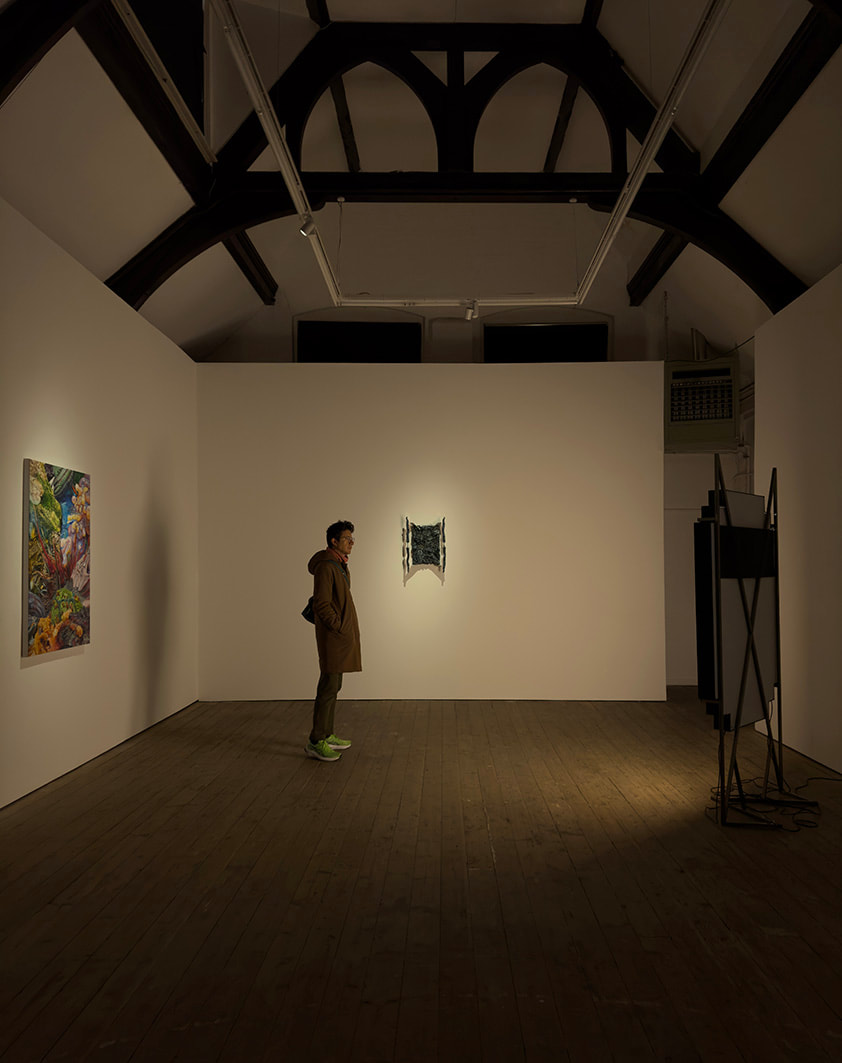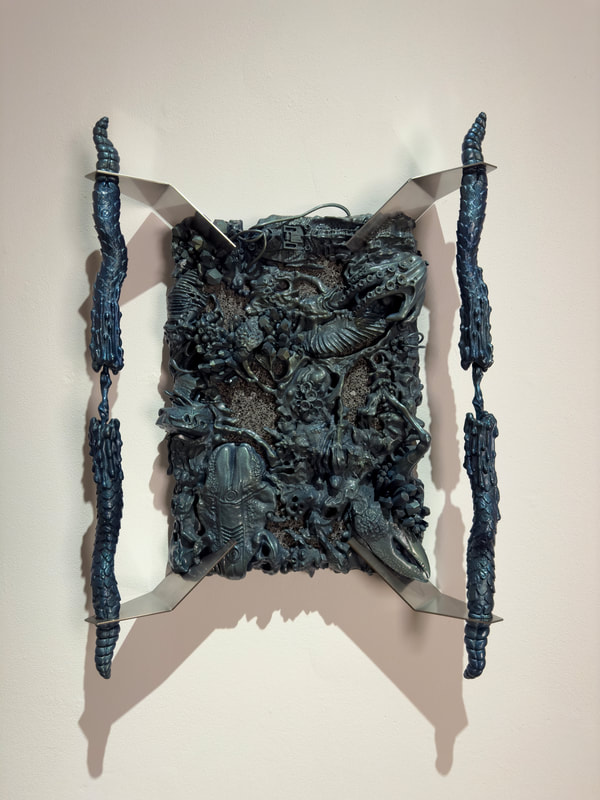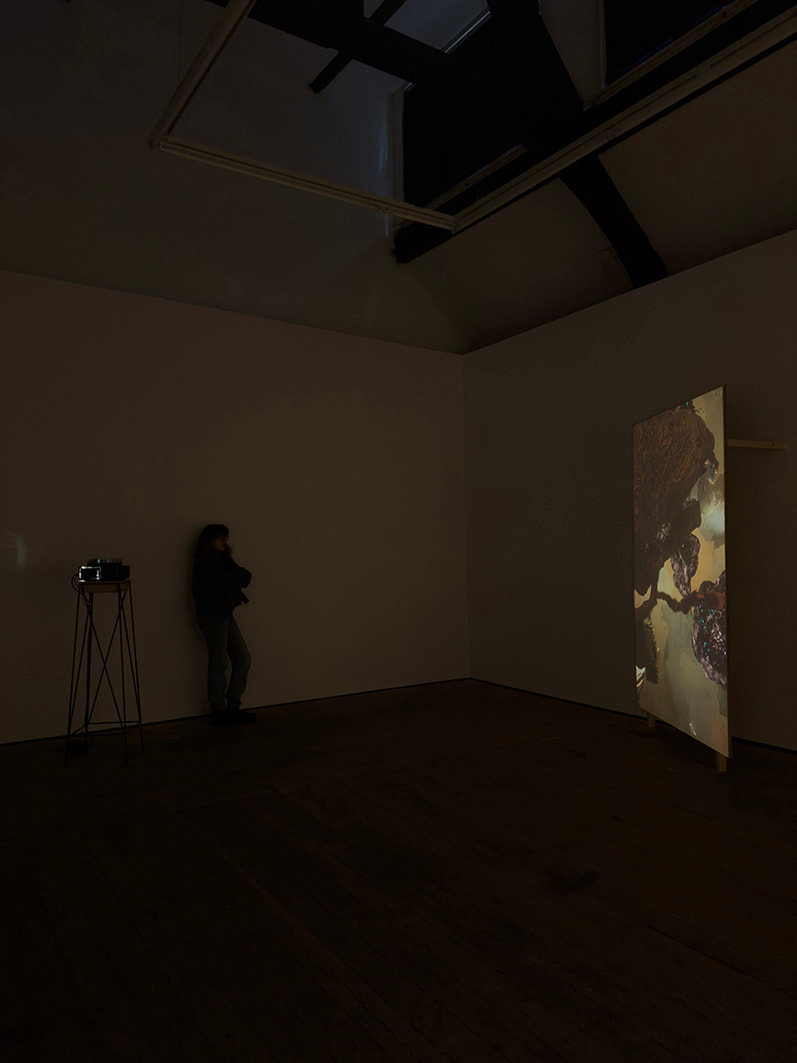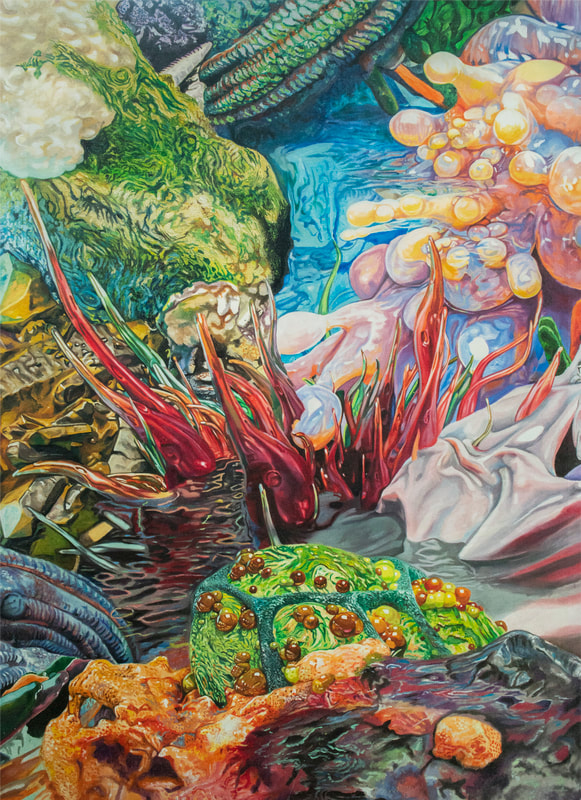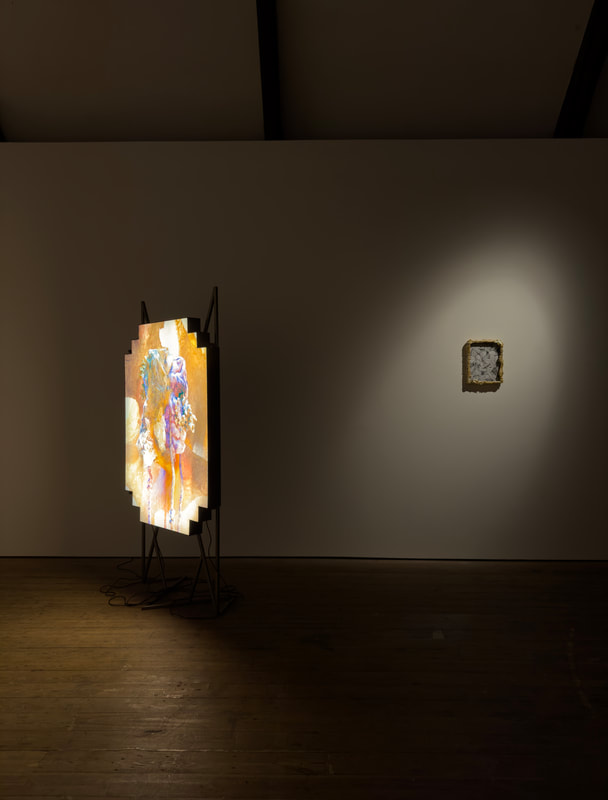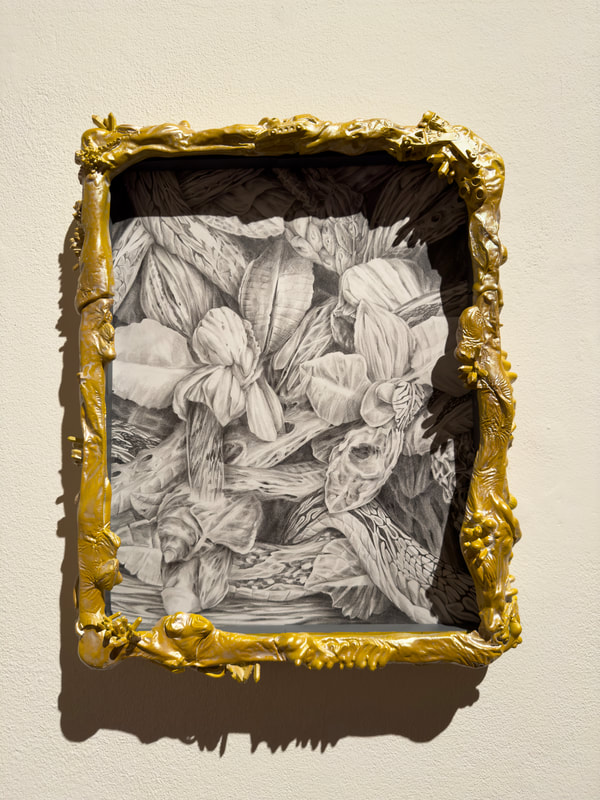Oscar Santillán: The Andean Information Age
15 March 2024 - 11 May 2024
15 March 2024 - 11 May 2024
|
|
When the campaigns of extirpation in the Andes of South America were ordered, high on the inquisitors list were 'Huacas'. According to the people that named them, Huacas are sacred animistic entities that can manifest on Earth in endless forms - from mountains to human-made objects. This posed a significant problem for the Spanish arrivals since they did not fit any criteria within Western taxonomy.
The globalized Western mindset is cemented in a relationship with the world in which everything is to be categorized, compartmentalized, and optimized. This very mindset expands all the way from the work of 18th century botanist Carl Linnaeus, who invented modern taxonomy, to the social media algorithms that instrumentalize our attention. As a result, we are constantly participating in dysfunctional relationships between the virtual and the organic, between the digital and the physical. The exhibition's root is the multi-disciplinary project called 'Antimundo', an ongoing series of paintings, drawings and sculptures that explore what lies beyond the ordering and organising that began in Ancient Greco-Roman times. Santillán describes his response as encompassing that which grows outside ‘Western reality’. Antimundo began in 2021 with a lecture and a publication on the Andean 'quipu.' Translated from Quechan as 'knots', quipus consist of networks of ropes and knots used throughout the Andes as recording devices. They encode and transmit numerical values about census and tax records, calendrical and military data, and textual information; few survived the Spanish destruction. To 'hack the old normative code', Santillán's works depart from alternative histories and engage technology to do so. In The Andean Information Age, he used a microcomputer to manage an old analogue slide projector. This way, he could control every slide's duration and synchronise it with a spoken word soundtrack that created for this piece. Individual slides show a succession of digitally generated images of imagined quipus, superimposed with audio from Santillán's research on their history and potential connections with today's technologies. The result is a sequence of 80 slides synced to audio, allowing this short but pivotal lecture to be given over and over. The exhibition also includes drawings, paintings and sculptures, which envision connections between this form of indigenous knowledge and emerging technologies such as Artificial Intelligence, Virtual Reality and 3D modelling. In particular, these works attempt to thwart processes of categorisation in order to draw attention to other world views, like that presented by the case of Huacas. Runs weekly, Wed - Sat, 12- 6pm until 11 May 2024 Oscar Santillán Oscar Santillán is interested in connecting distant points: the sweat of a person with the beat of drums, paper made out of a medicinal tree with Nietzsche’s typewriter, or bringing together the breeze displaced by a running jaguar and a marble container. Santillán began as a self-taught artist within the environment of Lalimpia, a collective he co-founded with other artists of his generation. After following different studies in Ecuador, a fellowship allowed him to pursue and obtain an MFA in Sculpture at VCU—Virginia Commonwealth University, US. He teaches at AKV|St.Joost, and he is a guest tutor at Sandberg Institute, both in The Netherlands. Recent projects include: A Heavy Halo, solo exhibition at RADIUS, Delft (the Netherlands), Elemental Constellationsat the Macalline Art Centre, Beijing (China), ZONDA, solo show at LLANO, Mexico City (Mexico), his inclusion in the Phaidon publication Latin American Artists: From 1785 to Now (2023), the HoltSmithson Foundation’s The Island Project: Point of Departure, alongside Tacita Dean, Renée Green, Sky Hopinka, Joan Jonas between 2021 and 2026. He has also been commissioned for projects by the Yokohama Triennial (Japan), Ballroom Marfa (USA), Bienal de Arte Paiz (Guatemala), Laboratorio de Arte Alameda (Mexico), and the Eli and Edithe Broad Museum (USA). Institutions and private collections include Kadist (US), CIFO (US), Jumex (MX), Colección Adrastus (ES), LACMA, Los Angeles (US), Fries Museum (NL), FRAC/ Île de Paris, (FR), AMC Collection, Amsterdam (NL), Museum Voorlinden (NL), Jacques and Miny Defauwes Collection (NL), Museo de Arte Carrill Gil (MX), Centraal Museum Utrecht (NL), Silvia Fiorucci Collection (MC), Colección Carlos Marsano (PE), Keramiekmuseum Princess-hof (NL), Art Nexus (US/CO), Bieke and Tanguy van Quickenborne Collection (BE), Servais Family Collection (BE), Colección Otazu (ES) among others. For Oscar Santillán's full CV and further information please click here |
